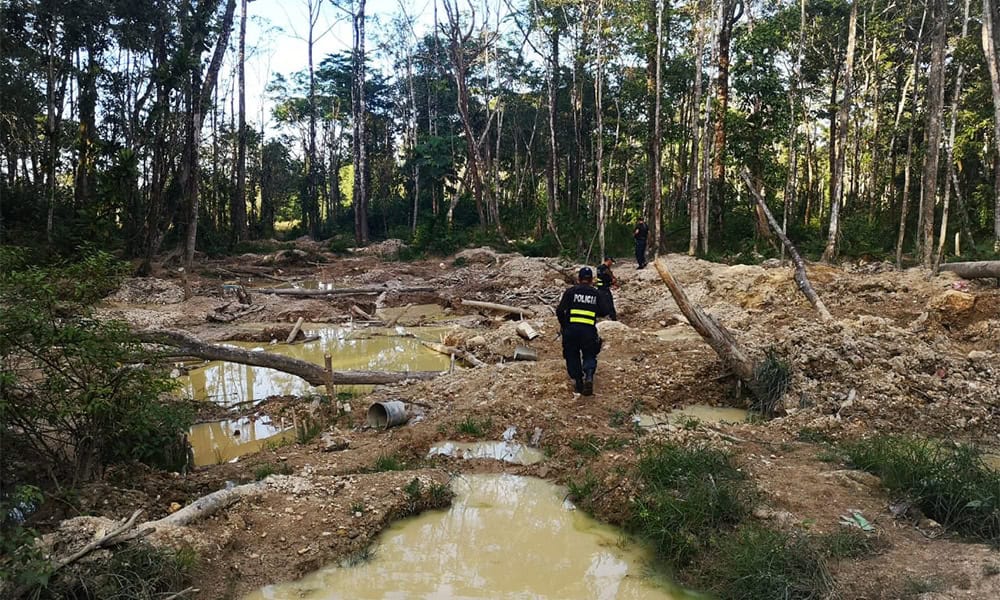Environmental crime in Costa Rica has escalated dramatically, with the illegal gold mining crisis in the Crucitas region now bearing all the hallmarks of organized crime, according to Environmental Prosecutor Luis Diego Hernández.
Speaking on the growing threat, Hernández warned that criminal networks have seized control of gold mining operations not just in Crucitas, but also in other critical ecosystems like Corcovado National Park in the South Pacific.
“The Public Prosecutor’s Office has identified figures like sponsors, resource providers, infrastructure coordinators—this mirrors the structure of drug trafficking organizations,” Hernández explained. “These are not isolated miners. These are tightly controlled operations run by specific individuals or groups.”
The operations, according to Hernández, involve the systematic provision of industrial-grade tools, makeshift infrastructure, and hazardous substances like mercury and cyanide—chemicals used to extract gold from rock but which pose grave environmental and health threats. “We are dealing with trafficking in dangerous substances. The phenomenon has reached a point where we can confidently say this is organized crime,” he added.
Authorities have also traced a disturbing financial trail. Hernández confirmed that illegal gold mining operations are directly linked to money laundering schemes, further embedding environmental exploitation into Costa Rica’s broader criminal underworld.
A cross-border investigation titled Mined Countries—conducted by La Voz de Guanacaste, Interferencia de Radios UCR (Costa Rica), Revista Concolón (Panama), and the Latin American Center for Investigative Journalism (CLIP)—exposed a staggering 623% rise in cyanide imports over the past decade. The chemicals are often transported without oversight and used indiscriminately, contributing to toxic pollution in mining zones such as Crucitas and Abangares.
Local ecosystems and nearby communities are paying the price. Runoff from illegal mining has contaminated rivers, degraded biodiversity, and exposed residents to toxic substances. Despite years of discussion and promises of intervention, authorities have yet to implement any sustainable or concrete plan to dismantle the syndicates or restore the ravaged land.
“No one is offering a real solution,” Hernández lamented. “And the problem keeps growing.” Environmental advocates warn that if the current trajectory continues, not only will Costa Rica’s rich biodiversity face irreversible damage, but communities in the path of illegal mining operations will also remain vulnerable to violence, economic exploitation, and severe health consequences.






